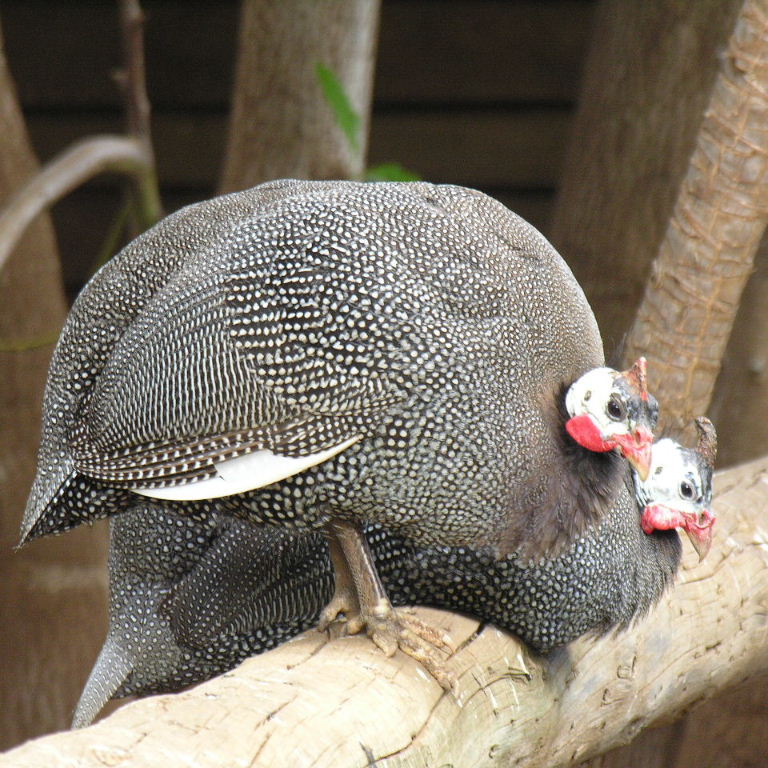Helmeted Guinea Fowl Numida meleagris



All Guinea Fowl are native to Africa but the Helmeted Guinea Fowl from sub-Saharan Africa has been domesticated and
introduced to other countries.



The wild bird has a blue, unfeathered head with red wattle and a helmet-like horn on the top, usually larger in the males.
The plumage is dark with an intricate pattern of pearls and mesh.



They do not come from Equatorial Guinea but "Guinea" was a name given to mean from an exotic, far away place,
like "Turkey" for the North American bird (which has the Greek for Guinea Fowl, meleagris, in its scientific name) and
"Muscovy" for the South American duck.



The domesticated fowl often have white faces rather than blue and sometimes lose the white spots on their plumage for white patches.

 Rare double-headed Guinea Fowl!
Rare double-headed Guinea Fowl!
 The Guinea Fowl that swapped its feet with a Little Egret.
The Guinea Fowl that swapped its feet with a Little Egret.


In addition to producing meat that is said to resemble turkey with pheasant, if free range they are efficient at controlling ticks,
lice and ants and, like geese, they are noisy watch-dogs.



In addition to a love of ticks and lice, they also eat seeds, small reptiles and small mammals.
They form fairly monogamous pairs in small flocks.



Like chickens, Guinea Fowl have a tendency to cross roads.



